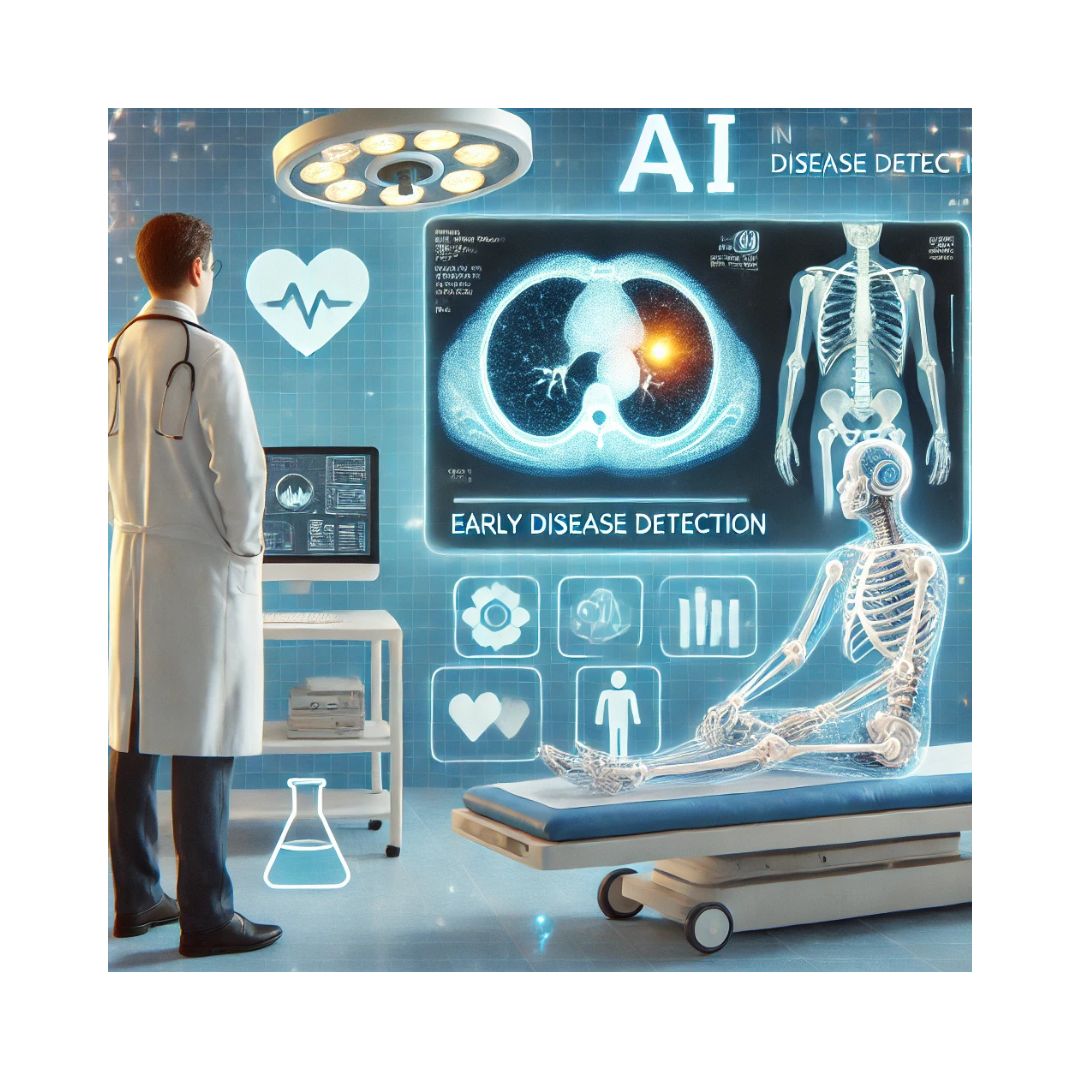The field of healthcare is experiencing a revolution with the integration of AI in diagnosis and early disease detection. Accurate diagnosis has always been a cornerstone of effective medical care. However, traditional diagnostic methods often involve delays and errors. AI addresses these challenges by offering tools that enhance accuracy and speed.
Experts say Artificial intelligence (AI) can help detect diseases early by analyzing large amounts of data and identifying patterns. AI can be used to analyze medical images, blood samples, and other data to predict a person’s risk of developing a disease.
AI in medical imaging
Medical imaging plays a key role in diagnosing various diseases. Technologies like X-rays, MRIs, and CT scans generate vast amounts of data. Interpreting this data accurately requires significant expertise and time. AI algorithms are changing the game by analyzing these images more efficiently than ever before. For example, deep learning models can detect cancerous tumors in mammograms with higher accuracy than human radiologists. A 2020 study published in Nature highlighted that AI reduced false negatives in breast cancer detection by 9.4%.
AI tools identify patterns in medical images that may escape the human eye. For instance, subtle lung nodules in CT scans can signal early-stage lung cancer. AI algorithms trained on large datasets detect these nodules quickly and reliably. This ensures timely intervention, which can save lives. Additionally, AI systems continuously learn and improve, ensuring their diagnostic capabilities grow with time.
Predictive analytics for early disease detection
AI excels at predictive analytics, which involves forecasting future health issues based on current data. This capability is vital for identifying patients at risk of chronic diseases like diabetes and heart disease. Predictive models analyze factors like family history, lifestyle, and medical records. By doing so, they calculate the likelihood of a patient developing a condition before symptoms appear.
For example, IBM Watson Health uses AI to predict heart disease risk by examining EHRs (electronic health records). These insights allow doctors to recommend lifestyle changes or preventive medications early. A 2021 report by the World Health Organization (WHO) noted that early detection could prevent 80% of heart disease-related deaths.
According to Shuroug A. Alowais, et al., “Integrating AI into healthcare holds excellent potential for improving disease diagnosis, treatment selection, and clinical laboratory testing. They noted that AI tools can leverage large datasets and identify patterns to surpass human performance in several healthcare aspects. AI offers increased accuracy, reduced costs, and time savings while minimizing human errors. It can revolutionize personalized medicine, optimize medication dosages, enhance population health management, establish guidelines, provide virtual health assistants, support mental health care, improve patient education, and influence patient-physician trust.”
However, they note key issues in healthcare analytics and AI. The experts talked about data quality and privacy concerns, algorithmic bias, lack of interpretability, regulatory hurdles. They also mentioned potential for misdiagnosis due to inaccurate AI predictions, among other concerns. Those issues must be carefully addressed to ensure responsible and effective implementation of AI in healthcare.
Analytical needs in diagnosis
Despite these advancements, integrating AI into healthcare requires addressing key analytical needs:
- Data quality: AI models rely on clean, comprehensive, and unbiased data for accurate predictions. Missing or flawed data can lead to errors.
- Interpretability: Many AI models, especially deep learning ones, function as “black boxes.” This means their decision-making process is not always clear. Clinicians need interpretable AI tools to trust and validate results.
- Scalability: AI systems must handle diverse datasets from different regions, hospitals, and demographics. A tool effective in one setting might fail in another.
Making AI accessible to practitioners
Bridging the gap between technology and healthcare providers is essential. Developers must design user-friendly AI systems that integrate seamlessly into clinical workflows. Training programs can help doctors and nurses understand AI’s strengths and limitations. For example, the American College of Radiology (ACR) has initiated AI courses for radiologists.

Leave feedback about this